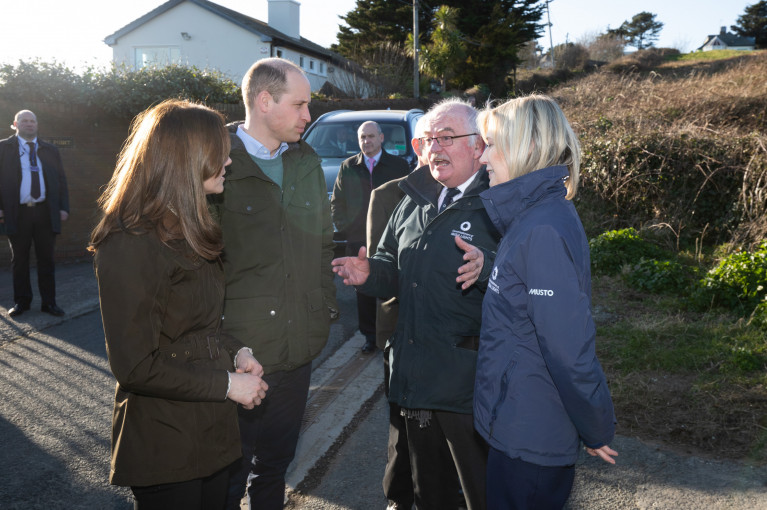Displaying items by tag: UK Royal Visit
Irish Lights Also Welcomes Duke and Duchess of Cambridge to Howth at the Baily Lighthouse
The Commissioners of Irish Lights were also delighted to welcome The Duke and Duchess of Cambridge yesterday to the Baily Lighthouse, Howth Peninsula (see story: Marine Institute) as part of the UK Royal couple's first official visit to Ireland which concludes today.
According to CIL, the Duke and Duchess of Cambridge met with Kieran Crowley, Chairman and Yvonne Shields O’Connor, CEO, Irish Lights at the Baily Lighthouse (marking the northern approaches to Dublin Bay). They discussed the long-standing historic relationship between Irish Lights and their General Lighthouse Authority (GLA) partners in the United Kingdom, Trinity House and Northern Lighthouse Board.
This active partnership sees the three authorities co-operating on a daily basis to deliver a range of services to ensure safe navigation around the Irish and UK coasts, meeting the Irish and UK governments’ obligations under the Safety of Life at Sea Convention.
Yvonne Shields O’Connor, CEO, Irish Lights said: "It is an honour to welcome Their Royal Highnesses The Duke and Duchess of Cambridge and to acknowledge the close working partnership that exists between Irish Lights and our colleagues in Trinity House and the Northern Lighthouse Board. For over 150 years we have worked in close collaboration to ensure safety at sea for mariners through our network of lighthouses, buoys and electronic aids to navigation. We recognise the hugely valuable work Their Royal Highnesses are doing in relation to climate change and marine conservation, which is very relevant to the service that we provide.”
Afloat adds the visit follows less than a year ago when Princess Anne in April 2019 also visited the Baily Lighthouse in addition to CIL's headquarters in Dun Laoghaire Harbour and boarded the ILV Granuaile (named after the 16th century Irish Pirate Queen from Mayo). Grace O'Malley who was regarded as a rebel, pirate and had 'disloyal' activities sailed to London to meet Queen Elizabeth I at Greenwich Palace in 1593.
Role on to the present day as Princess Anne, The Princess Royal is Master of The Corporation of Trinity House, a position held since May 2011. It was in that same month and year when Queen Elizabeth II made a historic first visit to Ireland.
Trinity House as one of the trio of GLA partners is responsble for the waters off England, Wales, the Channel Islands and Gibraltar, while Northern Lighthouse Board has the seas off Scotland and the Isle of Man. As for the remaining partner, Irish Lights whose mission is the safe navigation at sea and as a maritime organisation delivering essential 24/7 safety and navigation services around the coast to include N. Ireland.
























































